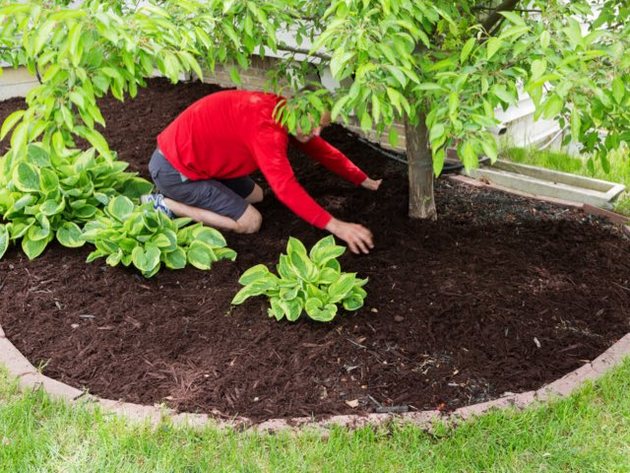
For home improvement return on investment, it's hard to beat the value that mulch delivers.
For a little bit of labor and not a lot of money, you can revive your yard and beautify your home for months to come.
Not only can mulch be attractive and sweet-smelling, but it helps the soil retain moisture, provides shade to roots on hot days, and stops the spread of weeds by blocking sunlight.
But as simple as applying mulch is, are you doing it properly? Based on personal experience and insights from experts, we offer these tips so that your efforts not only look great but benefit your trees and plants, too.
TRADITIONAL WOOD MULCH
Bear in mind that we're talking here about organic mulch, as opposed to inorganic materials such as rocks, rubber or plastic. While organic materials can include grass clippings and leaves, we're focused on the traditional and more popular wood mulch.
Install in mid-to-late spring: You don't want to install mulch too early as it will slow the ground's warming process. But finishing the job sooner than later will let you enjoy it longer and avoid having to do the work when temperatures get uncomfortably warm.
Turn old mulch before adding new: Over time, especially under a hot summer sun, the loose mulch you installed months earlier can become one crusty sheet that is almost impervious to water.
One option is to remove old mulch entirely before putting in new mulch. Or you can use a rake, pitchfork or garden tool to turn over the old mulch.
Pull or cut weeds: By removing or cutting weeds close to the ground, your mulch will lie flatter and you will reduce the likelihood of weeds sprouting later. You also can sprinkle a weed preventer such as Preen on top of the mulch.
Don't pile too much: Mulch halts weeds by cutting off sunlight to them. But it can do the same with plants that you hope will flourish, so 1 to 2 inches is sufficient. Seedlings can work through this amount, but if it's too deep it can be impenetrable.
"In areas where you simply want to keep anything from growing, you can lay it on as thick as you like," noted this article from Lowe's.
Mulch that's too deep stimulates root growth in the mulch rather than in the ground. The result is a shallow root system that is more vulnerable to cold and drought.
Don't let it touch trees: Moist mulch makes bark wet, making it susceptible to rotting. For that reason, don't pile mulch against a tree trunk so that it looks like a volcano and encourages pests and disease to take up residence. Leave at least a few inches between the edge of your mulch and any trees.
HOW MUCH DO YOU NEED?
You can purchase mulch at any home-improvement or garden center, by the bag (typically 2 cubic feet per bag) or in bulk. To figure out how much you need, multiply the length and width of the space in feet by your desired depth.
Let's say the area you want to cover with mulch measures 90 feet by 30 feet with a depth of 2 inches:
• 90 x 30 = 2,700 square feet.
• 2,700 square feet x .1666 (2 inches) is 450 cubic feet.
• You would need 225 bags of mulch (at 2 cubic feet each) to cover a 2,700 square feet with 2 inches of mulch.
Bulk mulch is sold by the cubic yard:
• A cubic yard = 27 cubic feet.
• 450 cubic feet divided by 27 = 16.67 cubic yards of mulch.
Unless you need only a little bit of mulch, the best value is to purchase it in bulk.
If you're a resident of Derry Township and are willing and able to pick it up, you can help yourself to an unlimited amount of free mulch at the recycling center, 650 Clearwater Road.
Additional sources: Better Homes & Gardens, wikihow.com
